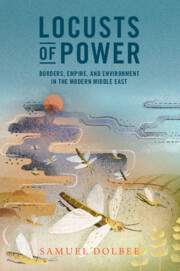Book contents
- Locusts of Power
- Reviews
- Studies in Environment and History
- Locusts of Power
- Copyright page
- Contents
- List of Figures and Maps
- Preface
- Acknowledgments
- Note on Spelling and Units of Measurement
- Introduction
- 1 Sultans of the Open Lands (1858–1890)
- 2 “Savage Swarms” (1890–1908)
- 3 “Weren’t We A Lot Like Those Creatures?” (1908–1918)
- 4 “Like Swarms of Locusts” (1918–1939)
- Conclusion
- Bibliography
- Index
4 - “Like Swarms of Locusts” (1918–1939)
Published online by Cambridge University Press: 16 June 2023
- Locusts of Power
- Reviews
- Studies in Environment and History
- Locusts of Power
- Copyright page
- Contents
- List of Figures and Maps
- Preface
- Acknowledgments
- Note on Spelling and Units of Measurement
- Introduction
- 1 Sultans of the Open Lands (1858–1890)
- 2 “Savage Swarms” (1890–1908)
- 3 “Weren’t We A Lot Like Those Creatures?” (1908–1918)
- 4 “Like Swarms of Locusts” (1918–1939)
- Conclusion
- Bibliography
- Index
Summary
Chapter 4 examines the Jazira’s divided connection from 1918 to 1939 as the region was divided between the Republic of Turkey, French Syria, and British Iraq. It does so through a focus on locusts, refugees, and various interwar state-making projects. While all of the different states in the Jazira endeavored to differentiate themselves from the Ottomans, they undertook strikingly similar projects based on refugee resettlement and sodium arsenite, the new insecticide that each state wielded to kill locusts. The substance did not altogether end the reign of locusts in the region, but it marked a shift in envisioning the land without the insects. The change also coincided with an unprecedented autonomist movement advocating for a French protectorate of the Jazira, and the ensuing conflict encompassed all of the protagonists of Locusts of Power, from the Shammar and the Millî to Armenian genocide survivors and Assyrian refugees. The autonomist effort failed, and the Jazira became the foremost space of Syrian agricultural development, Ottoman dreams of prosperity finally coming to fruition.
- Type
- Chapter
- Information
- Locusts of PowerBorders, Empire, and Environment in the Modern Middle East, pp. 191 - 253Publisher: Cambridge University PressPrint publication year: 2023



